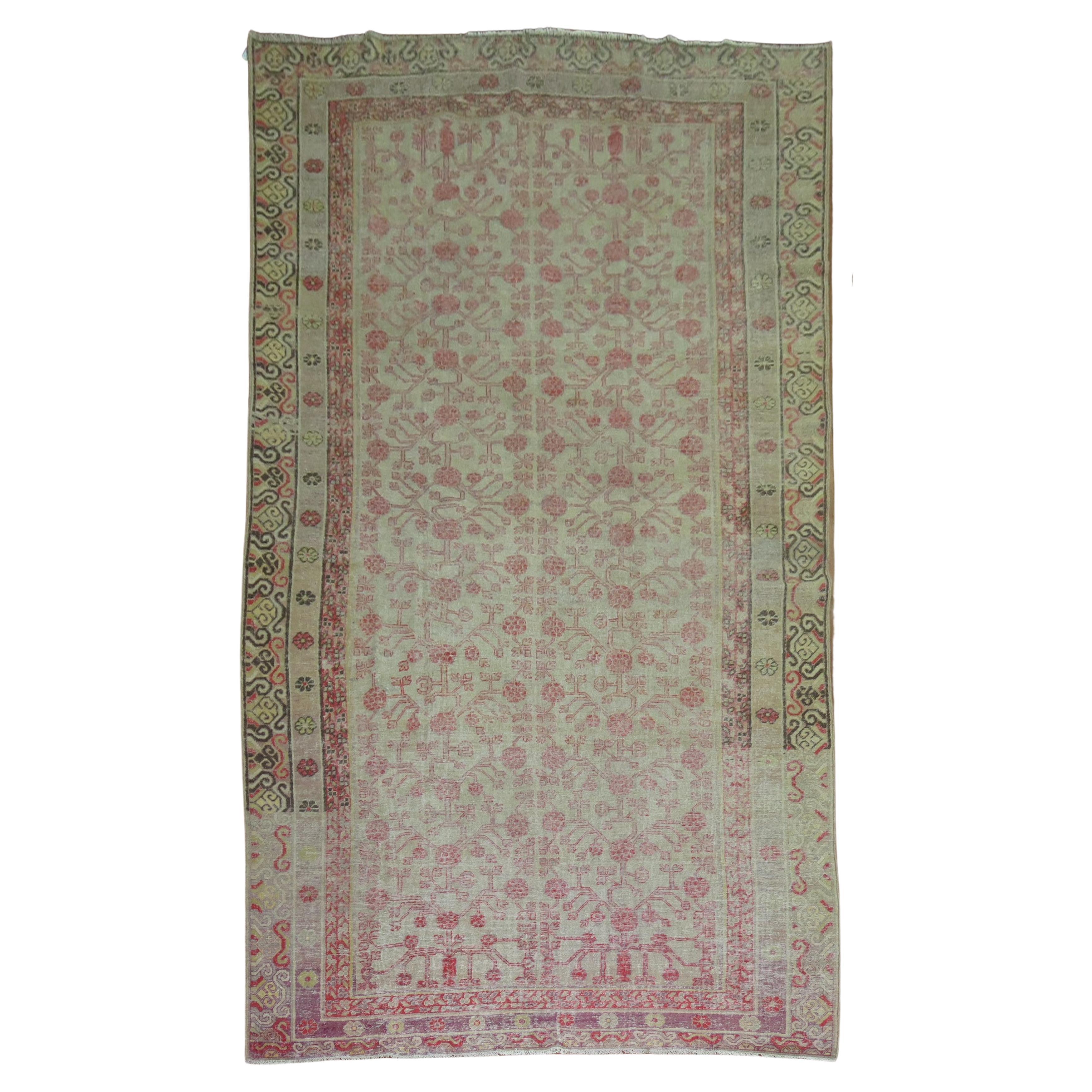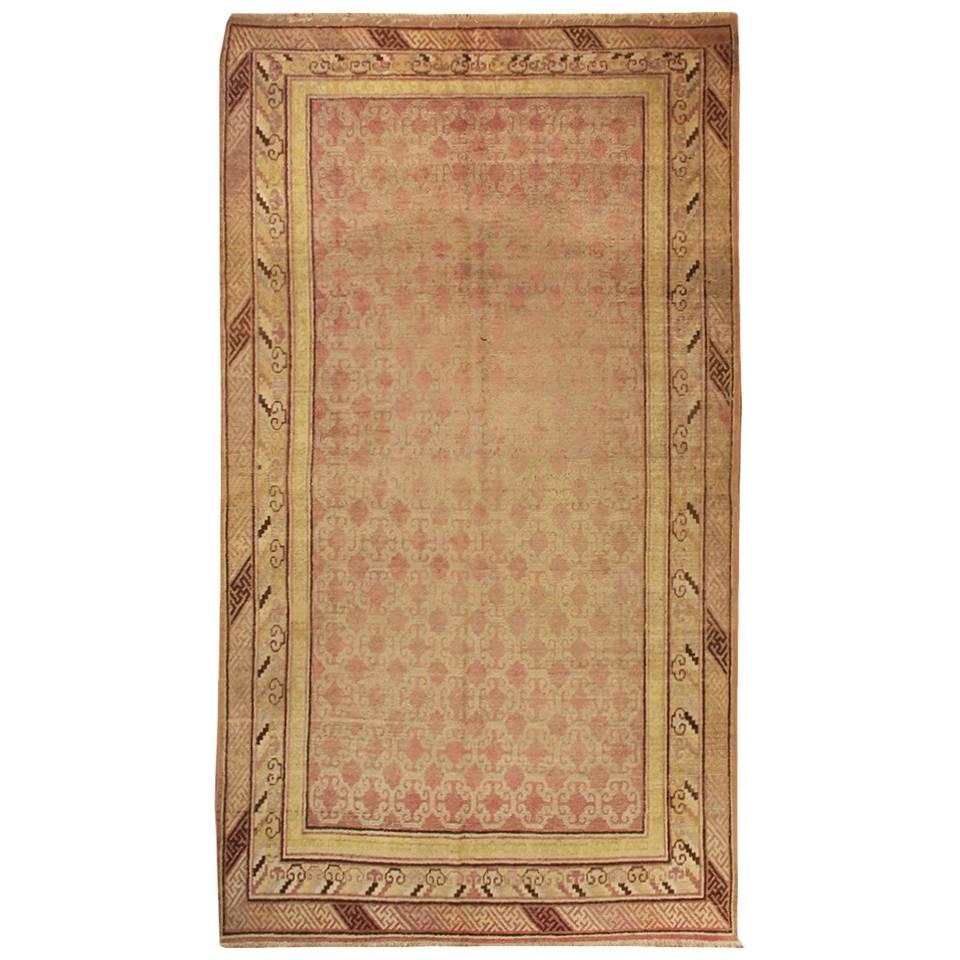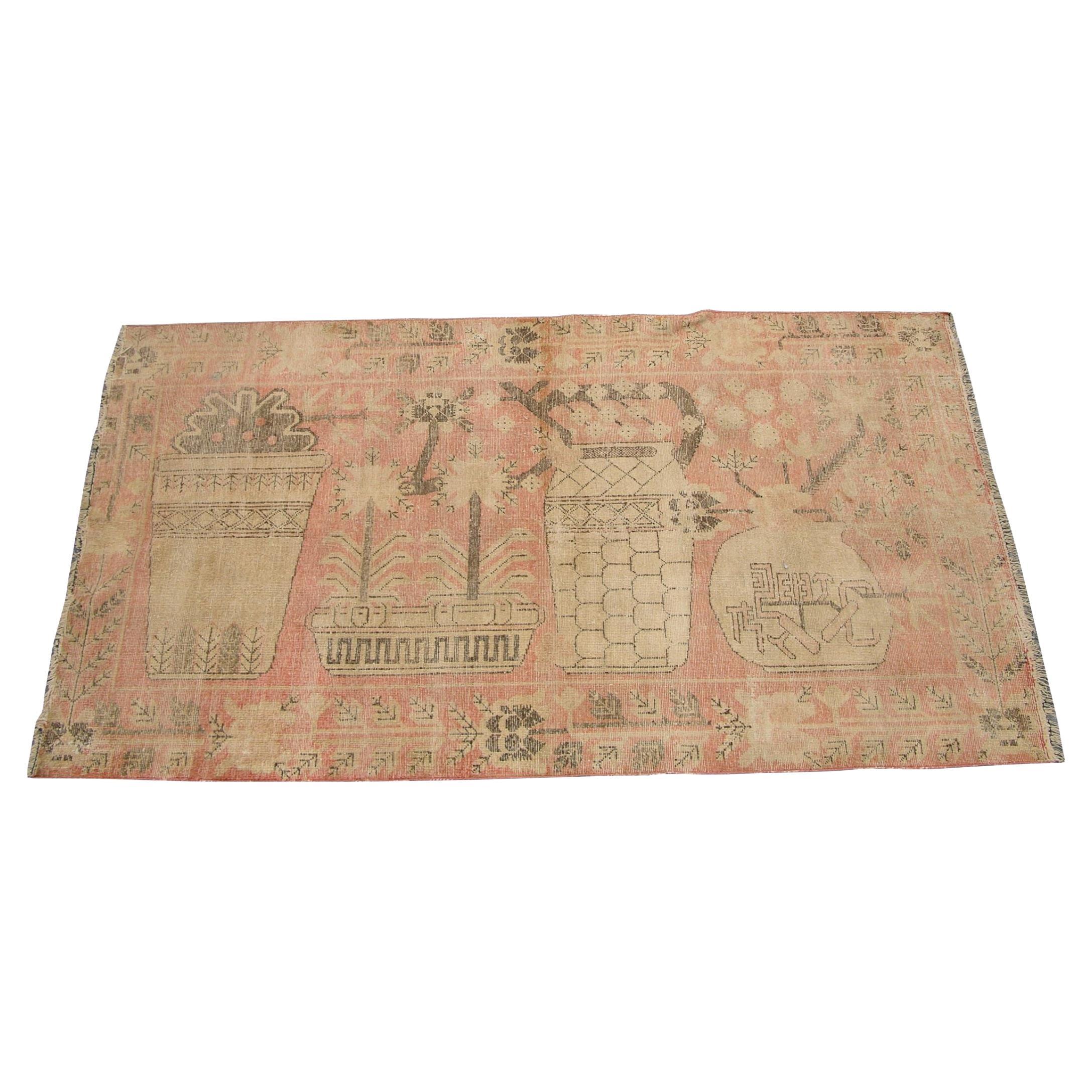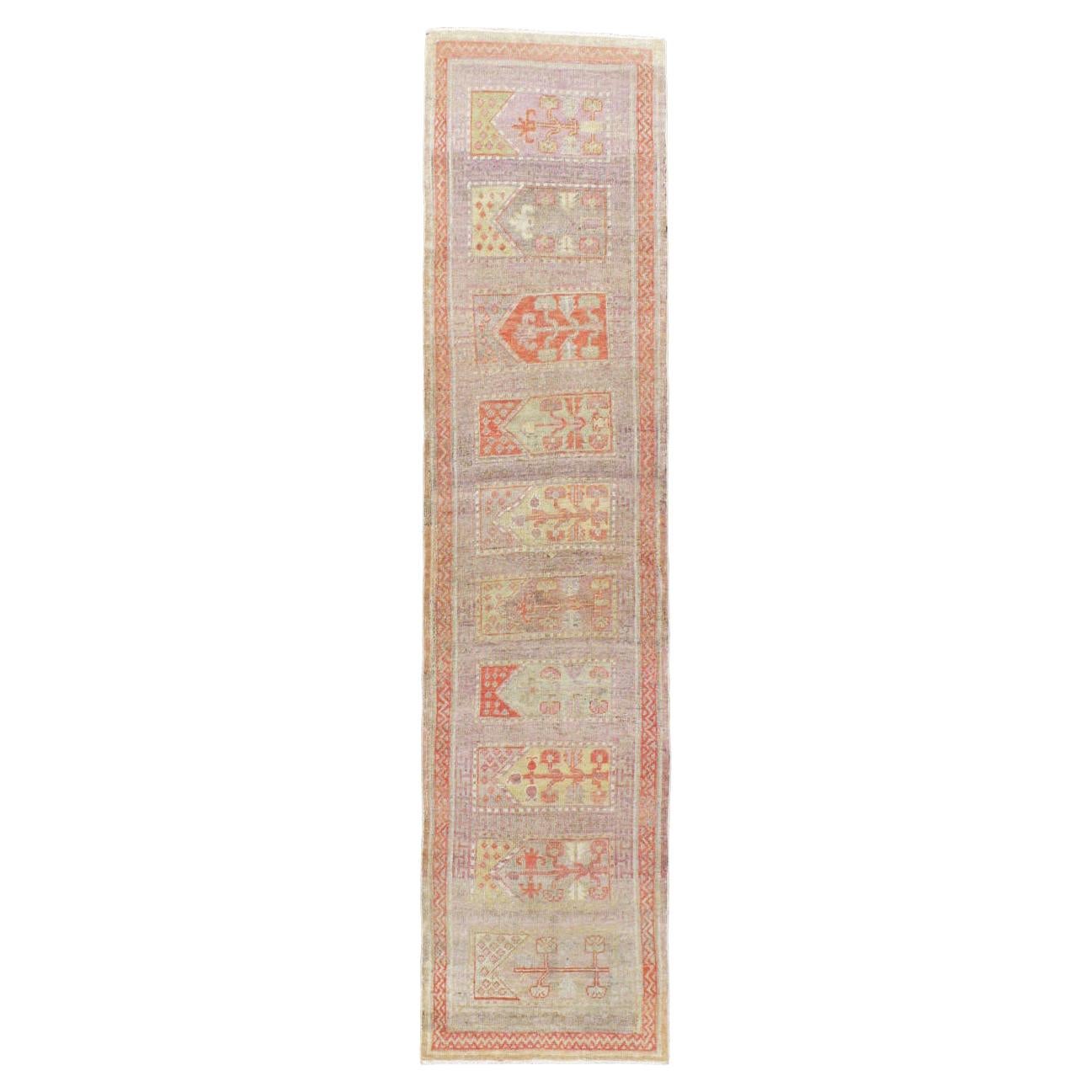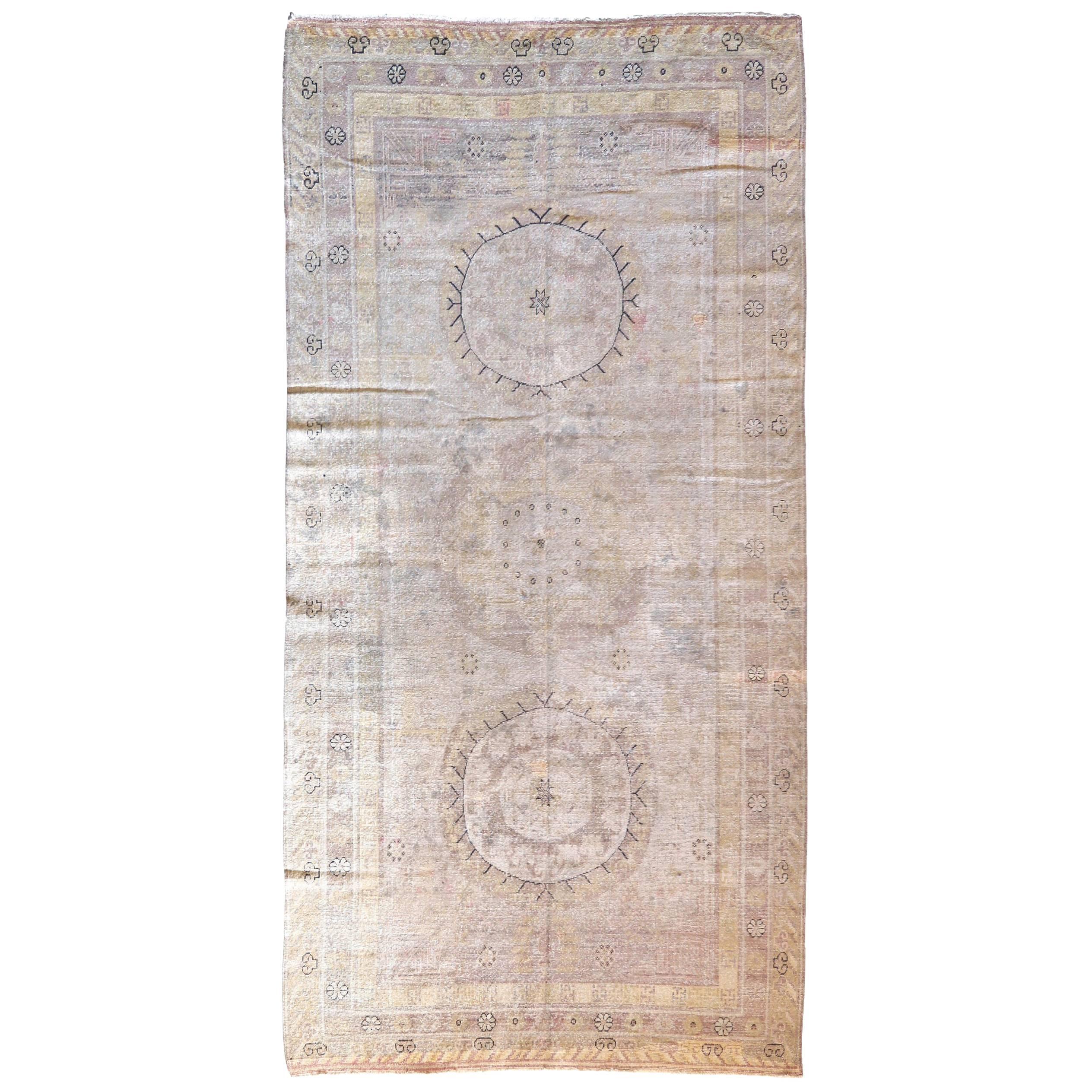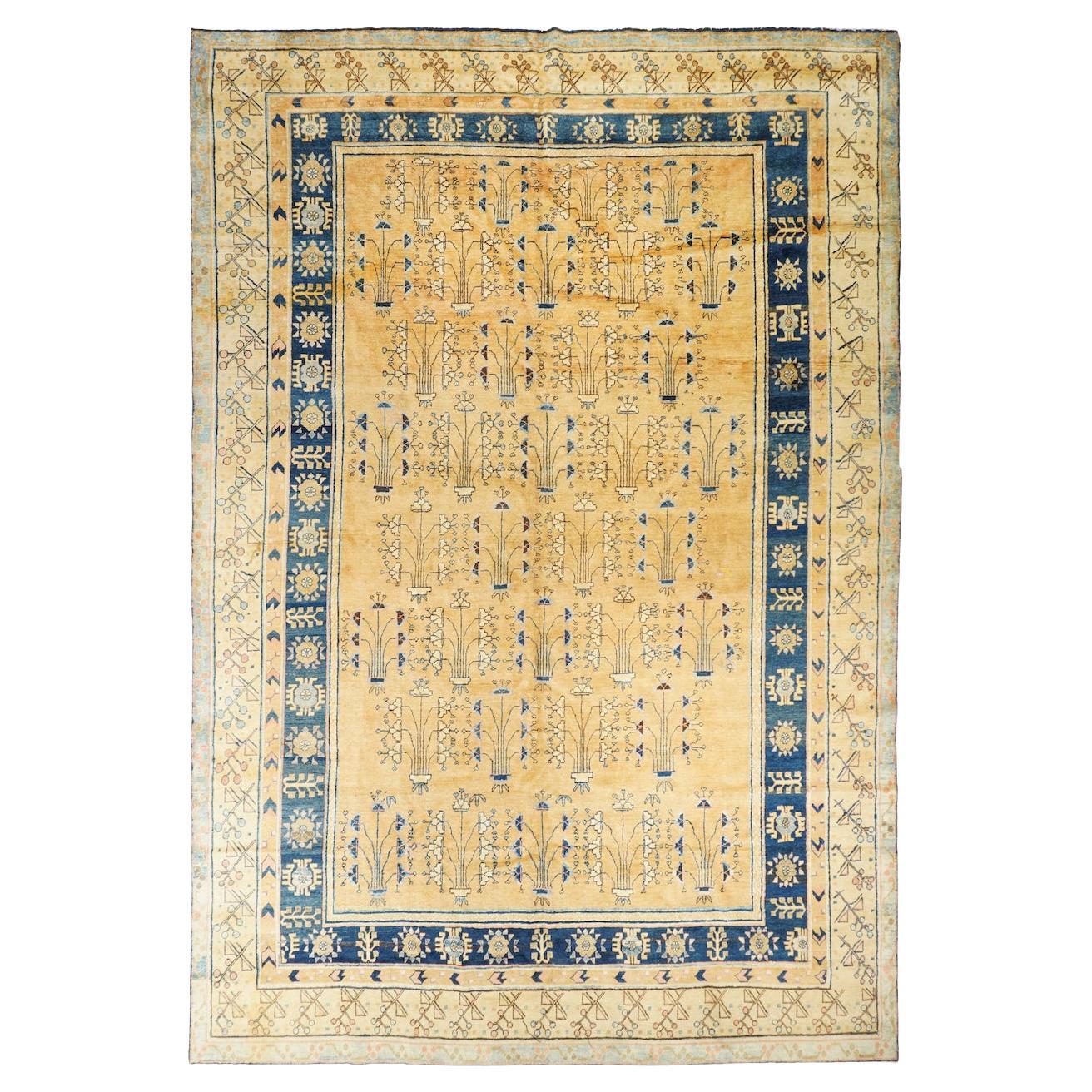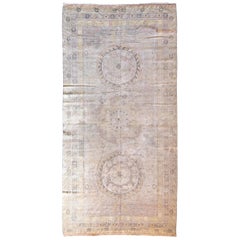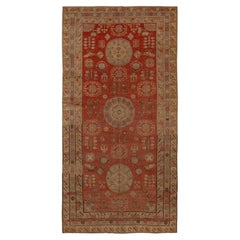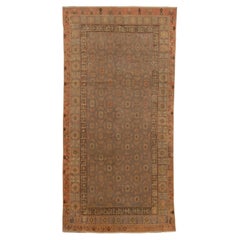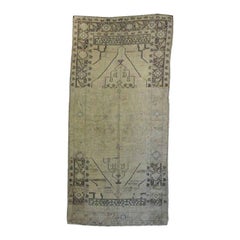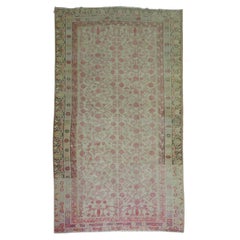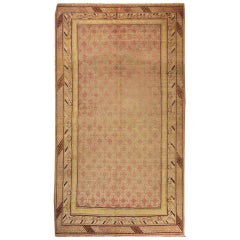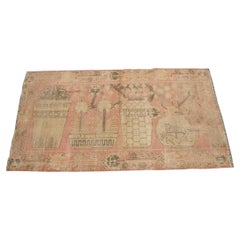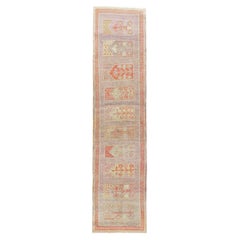Items Similar to Khotan Rug, Very Rare Design, circa 1880
Want more images or videos?
Request additional images or videos from the seller
1 of 5
Khotan Rug, Very Rare Design, circa 1880
$9,499
£7,159.57
€8,275.18
CA$13,422.04
A$14,670.77
CHF 7,726.74
MX$180,391.25
NOK 96,562.96
SEK 90,846.69
DKK 61,779.35
About the Item
This is a Khotan rug with a very rare design from the 1880's.
- Dimensions:Width: 41 in (104.14 cm)Length: 165 in (419.1 cm)
- Materials and Techniques:
- Place of Origin:
- Period:
- Date of Manufacture:1880's
- Condition:
- Seller Location:Los Angeles, CA
- Reference Number:Seller: 2010_3'5x13'91stDibs: U110524902958
About the Seller
5.0
Vetted Professional Seller
Every seller passes strict standards for authenticity and reliability
Established in 1995
1stDibs seller since 2010
18 sales on 1stDibs
- ShippingRetrieving quote...Shipping from: Los Angeles, CA
- Return Policy
Authenticity Guarantee
In the unlikely event there’s an issue with an item’s authenticity, contact us within 1 year for a full refund. DetailsMoney-Back Guarantee
If your item is not as described, is damaged in transit, or does not arrive, contact us within 7 days for a full refund. Details24-Hour Cancellation
You have a 24-hour grace period in which to reconsider your purchase, with no questions asked.Vetted Professional Sellers
Our world-class sellers must adhere to strict standards for service and quality, maintaining the integrity of our listings.Price-Match Guarantee
If you find that a seller listed the same item for a lower price elsewhere, we’ll match it.Trusted Global Delivery
Our best-in-class carrier network provides specialized shipping options worldwide, including custom delivery.More From This Seller
View AllAntique Khotan Rug, circa 1870s
Located in Los Angeles, CA
This is an antique Khotan rug from East Turkistan, circa 1870s. It features three prominent large circular medallions each stylized in a different design set against a beautiful soft...
Category
Antique 1870s Khotan Central Asian Rugs
Materials
Wool
Antique Khotan Area Rug
Located in Los Angeles, CA
Antique Khotan area rug in soft colors circa 1880's in good condition.
Category
Antique 19th Century Turkestan Central Asian Rugs
Materials
Wool
$18,499
Khotan Rug Antique, c. 1880s
Located in Los Angeles, CA
This is an antique Khotan rug from East Turkistan circa the 1880s. Three cloud-like central medallions are set against a field of stylized floral forms. Multiple borders frame the fi...
Category
Antique Late 19th Century Chinese Khotan Chinese and East Asian Rugs
Materials
Wool
$25,500
Turkish Ushak
Located in Los Angeles, CA
This is a pale Turkish Ushak rug from the 1920's.
Category
Early 20th Century Turkish Rugs
Materials
Wool
$3,999
Antique Khotan Rug
Located in Los Angeles, CA
This antique Khotan rug from East Turkistan circa 1860s and a great example of the early rugs from this region with three beautiful circular medallions, each with a unique design and...
Category
Antique 1860s East Turkestani Khotan Central Asian Rugs
Materials
Wool
$22,499
Antique Samarkan Rug, circa 1920s
Located in Los Angeles, CA
This is an antique Samarkan rug from East Turkistan, circa 1920s. It has a beautiful pictorial field design and borders consisting of different nomadic motifs. The red coral field co...
Category
Vintage 1920s East Turkestani Central Asian Rugs
Materials
Wool
You May Also Like
Antique Worn Khotan Rug
Located in New York, NY
Gallery size worn Khotan rug from the 19th century with a pomegranate design.
Measures: 6'4'' x 13'2''.
Category
Antique Late 19th Century East Turkestani Khotan Chinese and East Asian ...
Materials
Wool
Antique Khotan Rug
Located in Chicago, IL
An antique, late 19th century, Central Asian Khotan rug with gorgeous all-over ombre violet pattern surrounded by multiple complementary geometric borders.
Measures: 6' x 11'.
...
Category
Antique 19th Century Chinese Central Asian Rugs
Materials
Wool
$11,750
19th Century Khotan Samarkand Rug
Located in Los Angeles, US
The desert oasis of Khotan was an important stop on the Silk Road. The people of Khotan were expert carpet weavers who produced high quality antique rugs and carpets for both interna...
Category
Antique Early 1900s Empire Russian and Scandinavian Rugs
Materials
Wool, Cotton
Early 20th Century Handmade East Turkestan Saph Khotan Runner
Located in New York, NY
An antique East Turkestan Saph Khotan rug in runner format handmade during the early 20th century.
Measures: 2' 2" x 9' 3"
Central Asian Rugs & Carpets:
Central Asia is a vast area stretching from Northeastern Persia to western China, and from northern Afghanistan to the southern edge of Russia. The carpets can be usefully divided into three groups: the nomadic Turkmen rugs of Turkmenistan, northern Afghanistan, and northeastern Persia; the non-Turkmen tribal pieces from Kazakhstan, Uzbekistan, and Kirghizstan; and the urban creations of Khotan, Yarkand, and Kashgar, oasis cities of Western China (Xinjiang Province).
Commercially, the most important group is from Khotan, the easternmost of the Chinese Turkestan cities. The craft of rug weaving is primarily in the hands of Muslim Uighurs. Khotan carpets mix purely Central Asian design themes with Chinese elements. Native Khotan devices include pomegranate trees, upright flowers, round medallions, and yellow or red grounds. Chinese motives include triangular fretwork corners, swastika fretwork, and Yun-Tsao Tou (clouds and rain) diagonally striped polychrome borders. Cotton foundations, asymmetrical (Persian) knots, and medium weaves are standard. Some vintage Khotan are in horizontal, pictorial layouts with multiple various vases and plants. Saphs (multiple prayer niche panel carpets) are also a Khotan specialty. Others employ stepped and layered lozenge medallions, singly or in pairs. Still others, almost all antique, feature a stylized version of the allover Persian Herati design. Many of the oldest pieces employ brown wool wefts. Antique and vintage Khotans are almost always in the k’ang (double square) layout, conforming to the local household plans. Only relatively recently has the 6’ by 12’ or 7’ by 16’ format been replaced by the 9’ by 12’ size. As a result, an antique room size Khotan carpet is very uncommon. Reds are cinnamon, tomato and rust, never wine reds, crimson, or scarlet. Yarkand, farther west on the old Silk Road specializes in multi-medallion long carpets while Kashgar, farthest west and most under Persian influence, has traditionally knotted allover pattern pieces with finer weaves, often with silk piles, and enriched with medal thread, on cotton foundations. Extant Kashgars go back to the 17th century, but the carpet craft in Chinese Turkestan must be much older as fragments have been recovered from local tombs of the early C.E. period. Kashgars are the rarest of all East Turkestan rugs. Most available vintage East Turkestan carpets are interwar Khotans, many with pleasingly soft decorative palettes.
The non-Turkmen nomads include the Kazakh, Kirghiz, Uzbek, and Karakalpak groups. Like the Turkmen, they were once all seasonally migratory, dwelling in round felt tents (yurts), but have been settled, at least partially, in the villages, and have taken up crafts and agriculture instead of sheep herding. As a result, carpet production has transitioned from domestic tent use to commercial sale, but the roots of long traditions are still evident. The Uzbeks weave...
Category
Early 20th Century East Turkestani Folk Art Central Asian Rugs
Materials
Wool
Antique Khotan Rug 8'10'' x 13'5''
Located in New York, NY
Antique Khotan Rug 8'10'' x 13'5''.
Category
Antique 1890s Turkmen Central Asian Rugs
Materials
Wool
Khotan Rug East Turkestan
Located in Ferrara, IT
This elegant Khotan rug, measuring 58 x 172 cm, is a fine example of the artistry that flourished in the oasis city of Khotan, located along the Silk Road in East Turkestan. Khotan r...
Category
Antique 19th Century Chinese Khotan Chinese and East Asian Rugs
Materials
Wool
More Ways To Browse
Rare Rug
19th Century Khotan Rug
20th Century Italian Lighting
Hand Chair
Antique Hand Knotted Persian Rugs
German Vintage Lighting
Throw Pillows
Atelier Vintage
French Kitchen Furniture
Chandelier Italy Mid Century
Antique Mirrored Furniture
Murano Glass Clear
Turkish Rug Wool On Wool
Used Bar Glasses
Antique Ship
Turkish Wool Hand Made Rugs
Mid Century Cocktail Tables
Mid Century Mirrors
